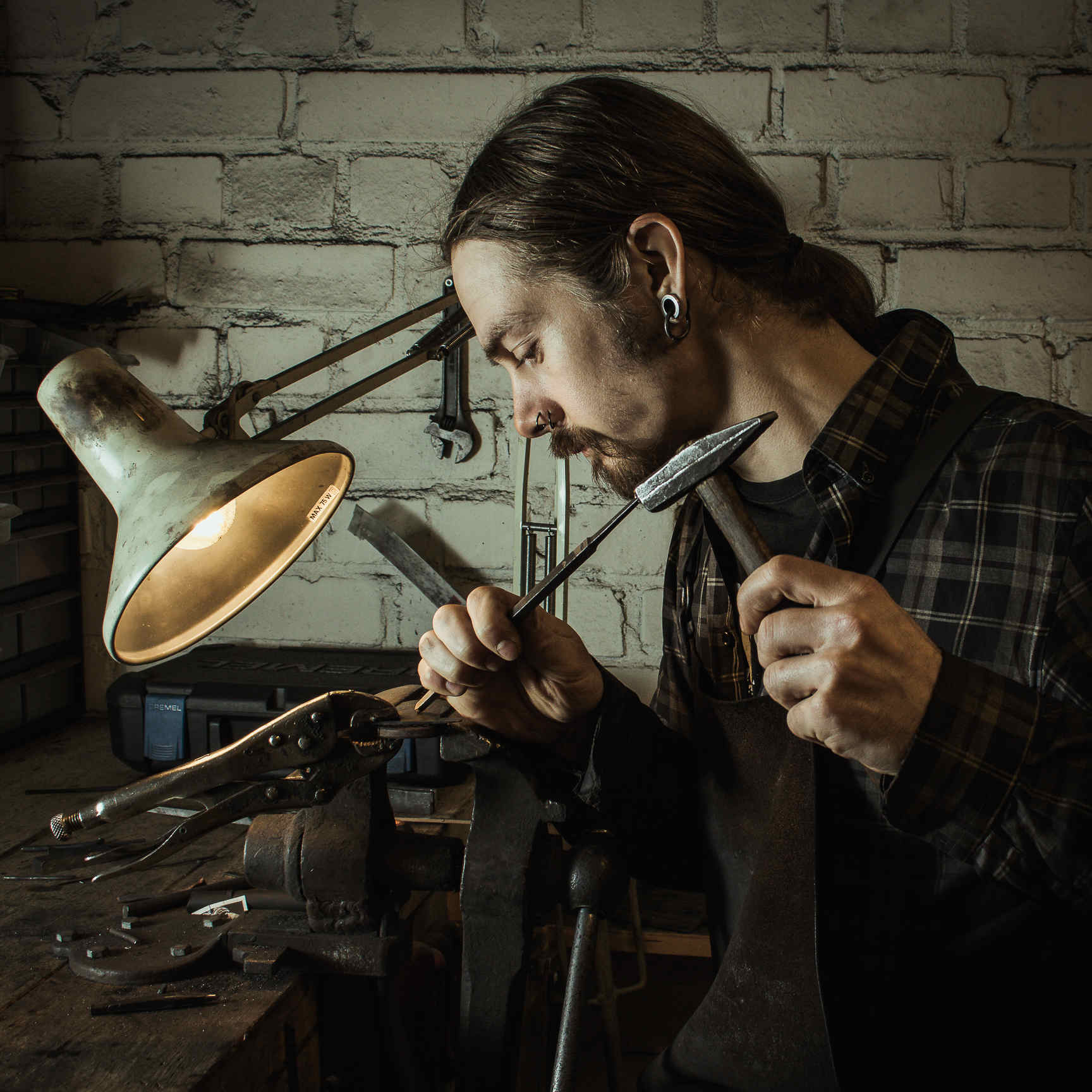My insight
Since my goal is to be the whole world's village blacksmith I want to be ready for any custom order so every now and then I look over my material inventory. The other day I noticed it was time to replenish and buy some more material to forge. So I bought a couple of hundred kilos of iron. But it hit me, I have a waste bin in my forge where I throw all the scraps. I realized that I very rarely empty it. And that “bin” is an old 10 l paint can, so it's not huge so apparently forging is a very efficient way of using the material. When I introduce the blacksmith craft to beginners I like to say it is kind of like pottery.
When I started to forge in 2010 I was used to working with wood. In woodworking/wood carving you remove material until the desired shape is accomplished. But forging is different and that is why it’s so little waste. You can forge thicker material and draw it out to thinner but longer iron bars. I will give you an example: Let's say you got an iron bar that measures 20 mm x 20 mm and that is 100 mm long but you need a bar that measures 5 mm x 5 mm. Then you can take the 20 mm x 20 mm and forge it so you get a bar that measures 5 mm x 5 mm and is 1600 mm long. So instead of throwing away the short but thick pieces it can be forged into longer thinner pieces that can be used for other projects.
Higher value than gold
Today Steel is the most commonly used metal and we can find it everywhere in our everyday lives. Steel is used in furniture, kitchen supplies, cars, buildings and much more. It´s used everywhere. Steel production is calculated in the weight of produced crude steel (Crude steel is unrefined steel and needs to be further processed before use). In 2020 all of the world’s countries produced a total of 1877.5 million tonnes of crude steel! But it has not always been like this. Once upon a time iron got a higher value than gold.
Iron object from 5000 BC
The Hittites, an ancient group of Indo-Europeans who formed an empire at Hattusa in Anatolia, located in what we today call Turkey, are believed to be the first people to make iron and had a monopoly on iron making until 1200 BC. It is said that one could be punished to death if one revealed how to make iron to others. Here in Scandinavia people have made iron for 3000 years. But there are objects that are much older than that. Archaeologists have found iron objects shaped by human hands from times when people didn't even know how to make iron. The oldest object is from the year 5000 BC and was found in Samarra, Iraq. But if people couldn’t make iron by then, how is this possible? The iron that was used came from space with meteorites.
Iron meteorites are the earliest source of iron to humans. The iron from space was very rare and expensive. One source tells us that when people traded this iron it was valued 40 times the silver value. It was exclusive and “came from the sky”. Iron meteorites are not as “pure” as human made iron. It is usually an iron-nickel alloy. Due to this alloy it is a bit different to work with and also has a different look than iron that is made in a furnace. The unique look and pattern that iron meteorites have is called “Widmanstätten pattern”, named after Count Alois von Beckh Widmanstätten.
Iron wins
Before the iron age we got an historic period that we call the bronze age and as the name tells us bronze was used. Bronze is an alloy and its main ingredient is copper. A common mix is copper and tin but other metals could be used as well. Even though bronze is a very useful material, one of the theories why the bronze age ended was simply because iron was a better material than bronze. It's possible to make iron tougher than bronze by adding carbon to it. Iron alloyed with carbon is called steel and steel gave us more durable tools than before and this was a revolution. With more durable tools we can use more different types of soil to grow our food, this made the populations whealtier and a new era began.
Further development
In Europe the iron was highly valued and expensive for a very long time and it was an important commodity, especially for the vikings. The vikings were known for making high quality iron. It was not until medieval times when blast furnaces became more common that the value started to drop. With a blast furnace it is possible to use a different type of ore. Before the blast furnace, when a bloomery was used, it was only possible to make iron out of so-called bog iron. With blast furnaces we can use iron ore from mines and also make larger volumes in each batch. By the end of the 19th century new processes were invented and the iron making process was made more effective. One of these methods is called the “Bessemer process” and was a game changer.
I want to preserve the knowledge
As the world’s village blacksmith I want to continue to use and also teach more about the craft so the coming generation can preserve this beautiful craft and use the material in a good way as I value iron as high as our ancestors.

